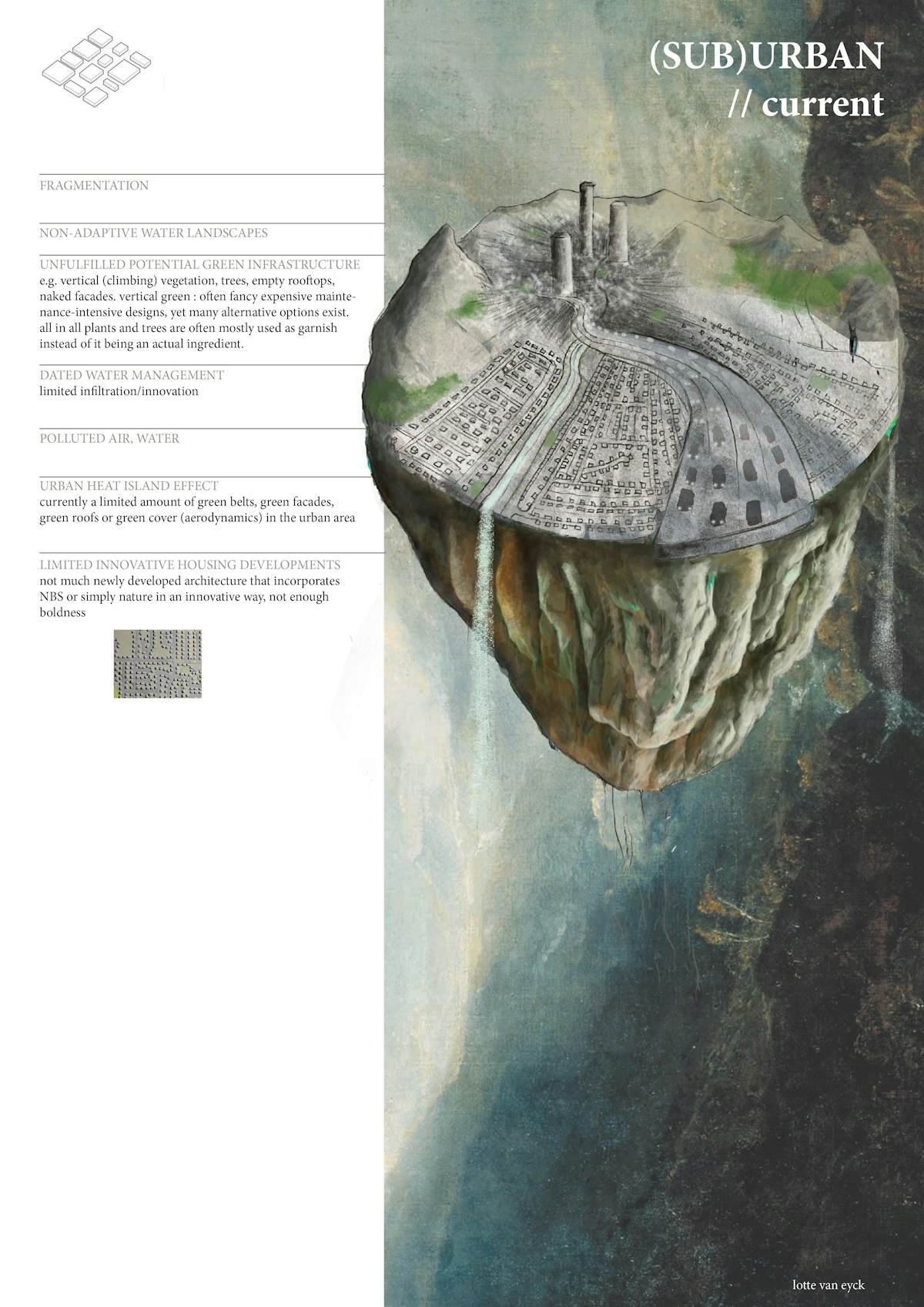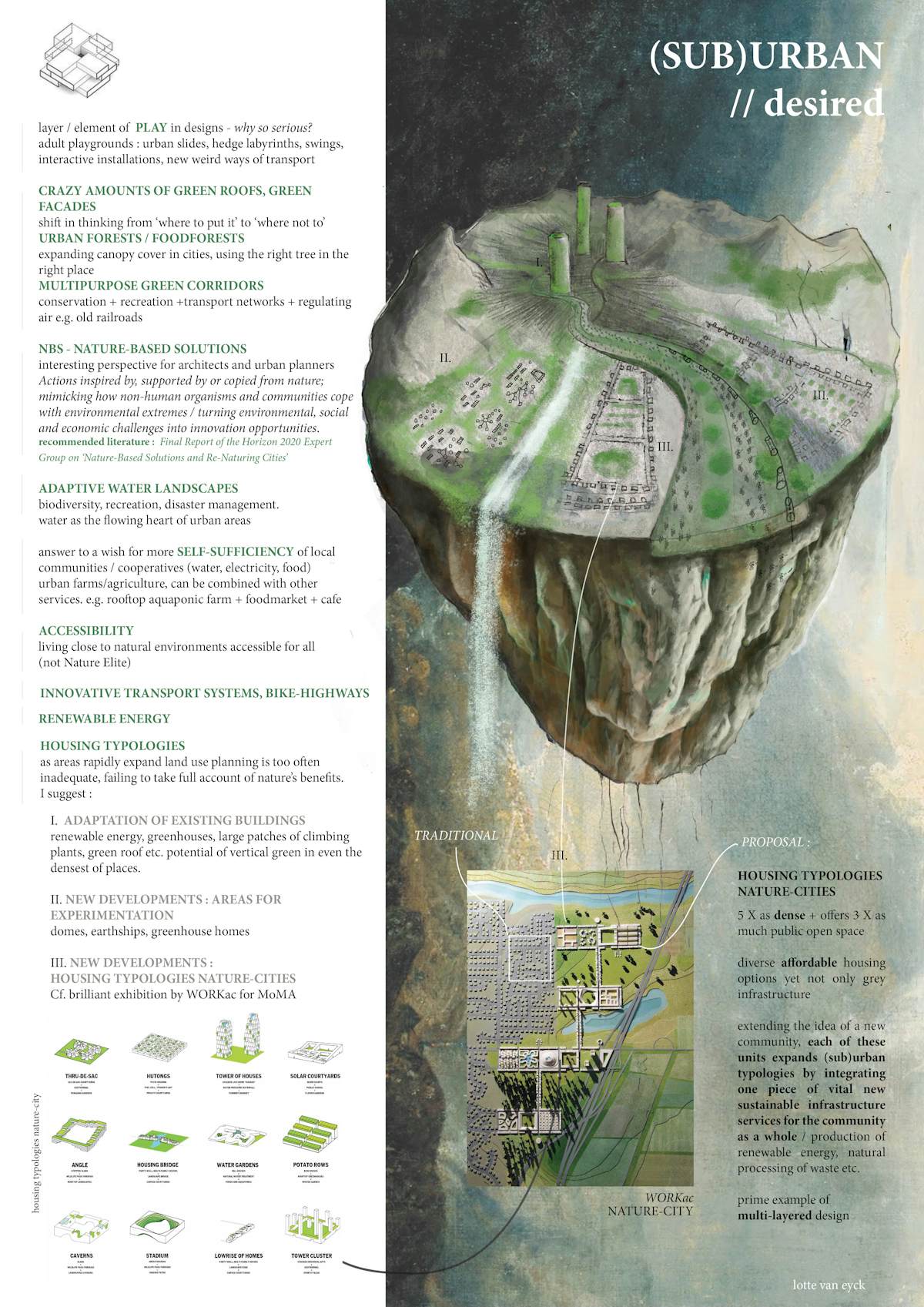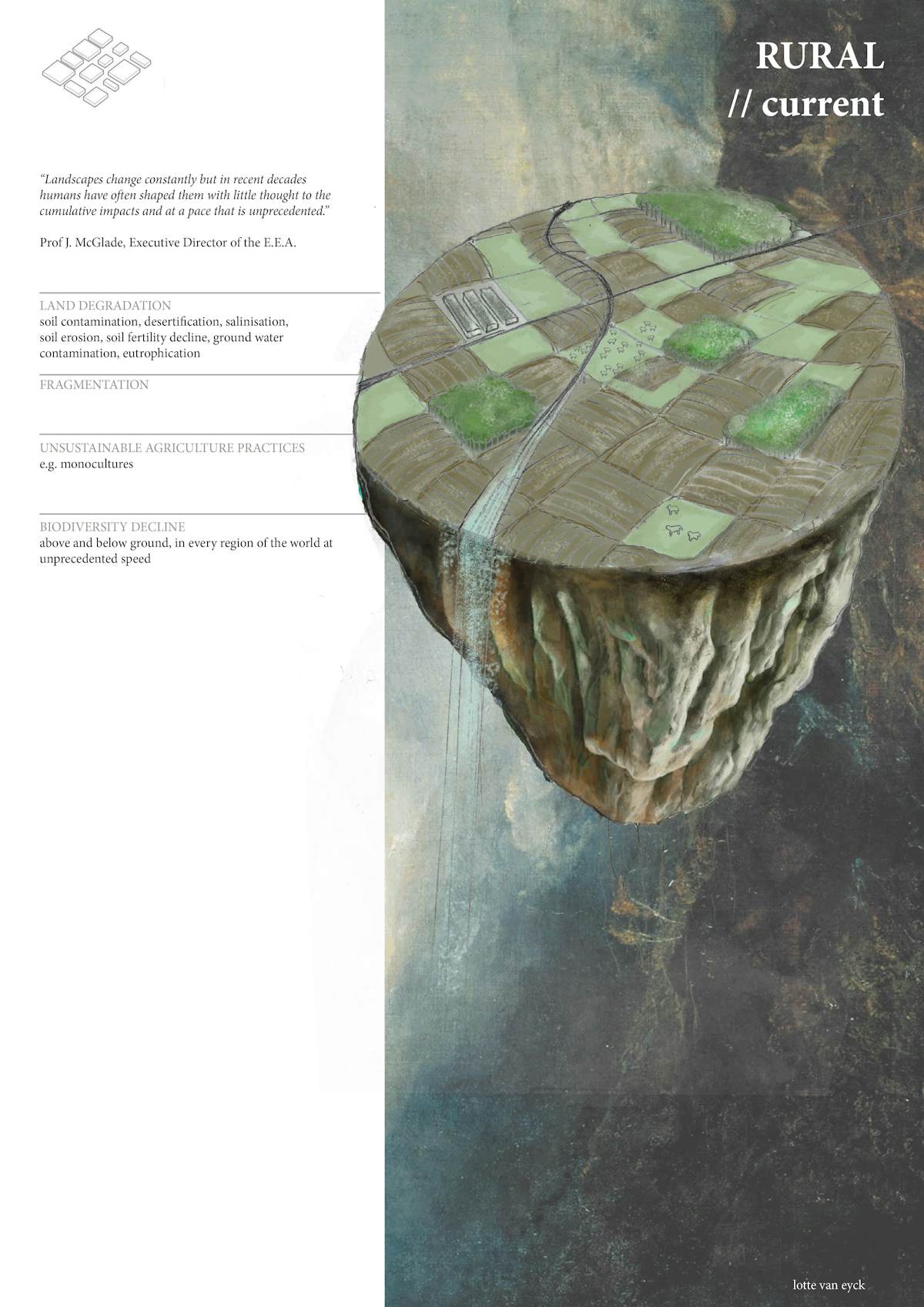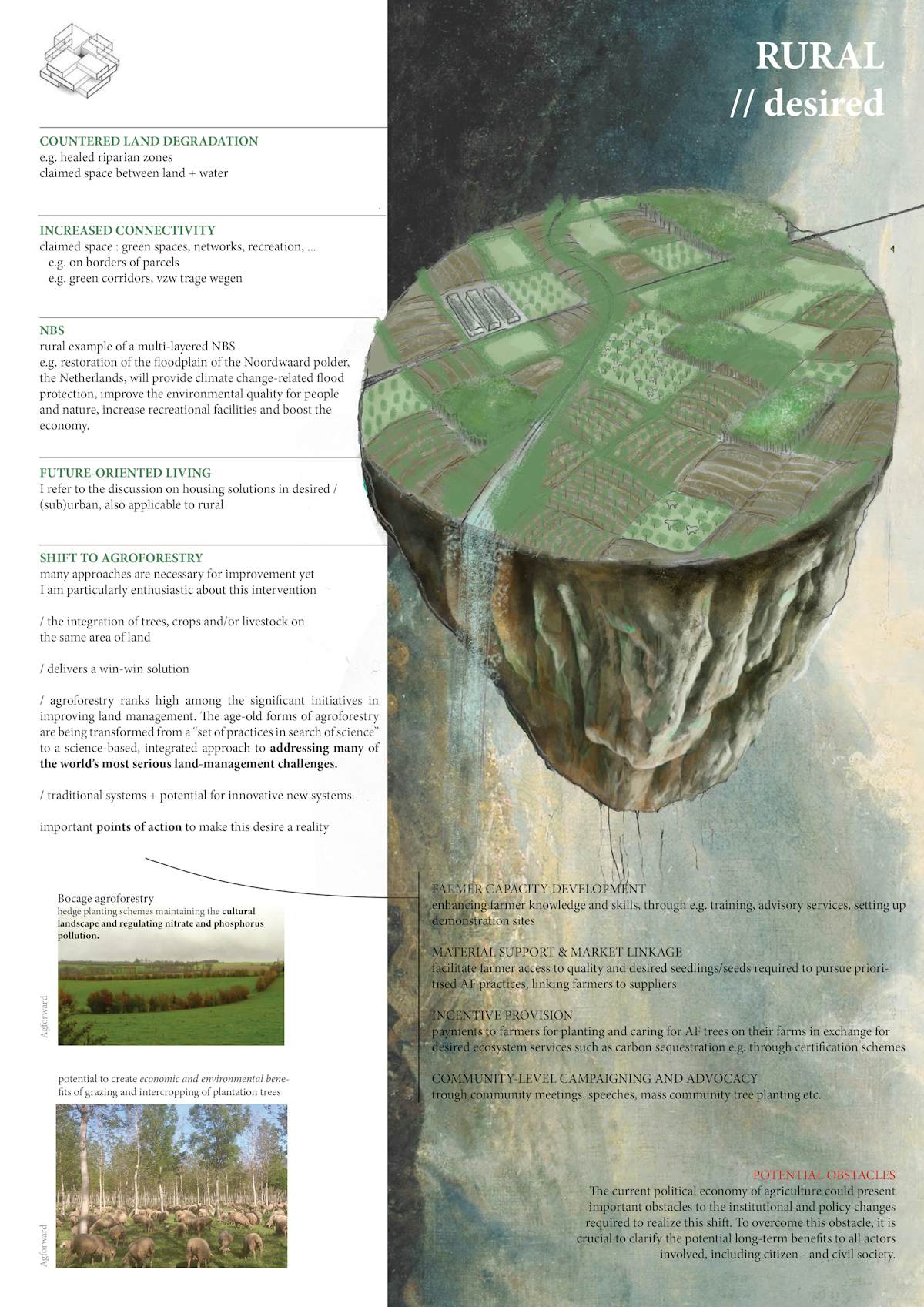PLANTHROPOCENE
action-oriented approach
to robust environments
The segregated landscape is intriguing to study from a plane window.
An easily controlled patchwork blanket. A lonely square of forest neatly bordering some squares of houses, bordering some monoculture fields, bordering a dense city. Some squares of football fields for recreation.
I question the severity in which this segregation has been pursued. Is it wise after all? Our current economic system, based on short-term extraction and exploitation, sees it as efficient to divide ecosystems into pieces of land and capitalize on each piece by assigning a one-sided, single use to it. Yet, we live in systems. Failing to remember this has concerning, negative implications for the long-term wellbeing of humans and the planet that we are witnessing today.
What if we can design our surroundings with a more playful approach to dynamically combining layers? Claiming space by sharing. What if blurring borders of a fragmented landscape allows us to claim and gain space in a new way?
This designed harmony of layers is my (landscape) architectural utopia.
In light of the current crisis I refer to the proposal of nature-city by WORKac for MoMA, a prime example of this designed harmony resulting in a more balanced, robust (un) built environment.
Lotte Van Eyck / Landscape architect



